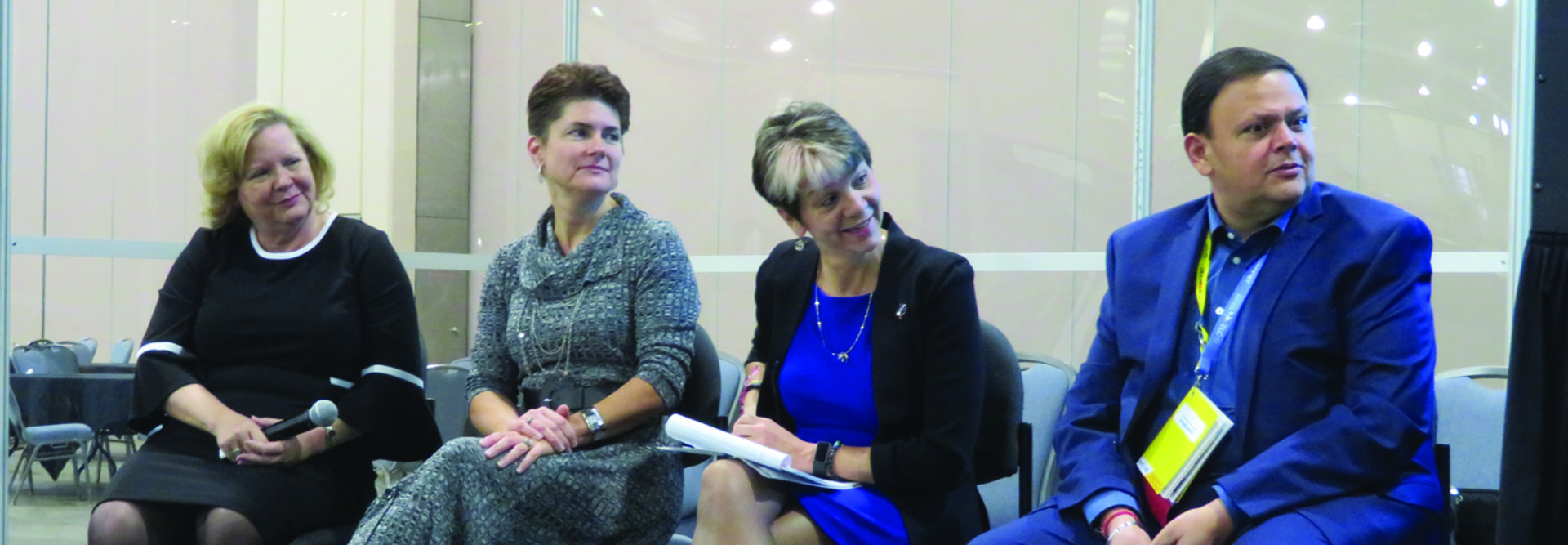Updating Policies, Clearing Inventory Helped Agencies Streamline IT
Graves spoke on a panel of current and former government CIOs and other officials who have worked closely on the FITARA scorecard. That semiannual assessment ranks agencies on how well they meet the requirements outlined in the law, including data center optimization, software licensing, enhancing CIO authority, cybersecurity and more.
Tony Scott, who was federal CIO as FITARA was first being implemented, said that the law “was a sea change in terms of governance and good IT in the federal government. It really helped set the stage for normalizing what we expected in terms of good governance.”
Agencies have worked hard to comply with FITARA requirements, and many have improved their scores greatly over the past five years. “Some of those policies had not been touched in possibly 20 years,” Graves said. “When you have Y2K still on the books, you still have an issue. You’ve got to clean out the closet — and then not go out shopping for more.”
NASA is among the agencies undergoing that process. “We have every software known to man,” said NASA CIO Renee Wynn. “What I need to know is, who’s going to leave the party? Because I can’t afford to pay for all the things that do the same widget orientation, and we only have five licenses for it instead of an enterprise license.”
Next year, her office will have all control of IT expenditures, and money saved through various consolidation efforts may be able to be plowed back into IT. Until then, she said, “we are going through that hard process of decommissioning and then hoping the money doesn’t evaporate before we get it. At least I know we’re saving money for the agency.”
Solid Inventory Leads to a Better IT Shopping List
At the Small Business Administration, CIO Maria Roat works with the agency’s CFO on acquisition strategy, “looking for those opportunities for enterprise solutions. There’s more to do, but I think we’ve made huge strides,” she said.
Three years ago, she began a push to get rid of duplicate IT: “We had 38 software tools for security — gone. It’s not just that we’re cutting but that we’re also buying the right things.”
FITARA brought transparency to agencies that had not had much in the past, said former U.S. Department of Agriculture CIO Jonathan Alboum; the USDA had 29 subagencies when he was CIO, and it was hard to get a handle on what IT was being used where and how often, he added.
Having a proper inventory of IT is critical for any agency that wants to modernize and consolidate. “We’ve got to stop doing things that are not providing the value for today’s needs in IT and data,” Wynn said. “When you do that, then you start to create budget. That makes more sense for us over the long haul. We decommissioned 40 VPNs. NASA didn’t need 40 VPNs.”
Follow FedTech coverage for more articles and videos from Imagine Nation ELC 2019.










